The following is a list of some of the leading figures of the Khmer Issarak movement on the left and right from the 1940’s-1955. Many sources in French, English and Khmer vary- and many of these figures used a number of different names and aliases (and spellings) during their rebellion. Therefore, be aware that there may be inaccuracies with some of the details provided, and the list is for informative purposes only. and is not intended to be a historical account of those men featured.
This concludes the series from PART ONE , PART TWO and PART THREE
Ban Ouch Nil Pich: A right-wing Issarak who defected to the government in 1954/55. He was commissioned by FANK and later killed under the Khmer Rouge- supposedly with the assistance of his nephew- a cadre named Nath, who worked with Comrade Duch at S-21.
Chan Samay: A French educated communist named as a deputy of the FUI at the founding conference in Kompong Som Loeu, Kampot province April 17–April 19, 1950 and one of three Vice Presidents of the CCLP ‘alternative government’. Fled to Hanoi after the Geneva Accords.
Dap Chhuon aka Chuan Khemphet, Khem Phet, Chhuon Mochulpech and Chhuon Mchoul Pich was born 1912 in Siem Reap and grew up in Prey Veng.
As a young man he joined the French militia and rose to the rank of sergeant. In the Franco-Thai War he was either captured or deserted to the Thai military. In 1943 he deserted from the Cambodian National Guard at Bang Mealas, allegedly in the possession of his men’s pay.
By the mid-1940s, Chhuon was backed by the Thai government in organizing anti-French guerrilla activity in the area around Siem Reap.
He became a leader of the Khmer People’s Liberation Committee (CNLK), but in late 1949 he and his men switched sides and went over to the French, who rewarded him with virtual control of parts of northern Cambodia and an official military post as commander of the “Franco-Khmer Corps”.
Chhuon had a reputation for extreme brutality which had rapidly alienated the other Issarak leaders, and ruled effectively by personal decree. The local peasantry accredited him with powers of invulnerability, reinforced by his habit of demonstrating feats of strength and his “daunting” appearance, being cadaverously thin with “unblinking, deep-set eyes”.
After 1954 and Cambodian independence, Chhuon joined the new government of Sihanouk, and was brought to the Geneva Conference as a show of ‘Issarak support’. During the 1955 elections, Chhuon’s militia were routinely used to break up rallies of Sihanouk’s opponents and would intimidate voters. He was later made Chief of Police and was well-known for his brutality.

Chhuon became Internal Security Minister, and the Governor of Siem Reap Province, where his anti-communist activities were noticed by US intelligence. Chhuon was removed from the cabinet in 1957 after disagreements over Sihanouk’s turning to
In 1959 Chhuon was exposed in an allegedly Central Intelligence Agency-funded coup plot (the “Dap Chhuon Plot” or Bangkok Plot), and Sihanouk ordered his arrest. According to one account, Chhuon was surprised at his home by Lon Nol’s security forces and despite escaping clad only in a sarong, he was quickly recaptured and killed.
Ea Sichau: Among one of the first Cambodian students to arrive in France after World War II, Ea Sichau was one of the seven founding members of the AEK (along with Thiounn Thieunn, Thiounn Thioum, Thiounn Mumm, Nhek Suong, Phlek Chhat and Yem Sarong) in 1946. He held the role of President to inception until 1950.
After completing his Hautes Etudes Commerciales business course (roughly equivalent to an MBA), Sichau returned to Cambodia and was a Customs and Excise officer. He joined Son Ngoc Thanh, but maintained ties with the French Communist Party and was unsuccessful in an attempt to procure weapons from the USSR through intermediaries in Paris- and was told to deal directly with the Viet Minh.
Wary of the Vietnamese, Ea Sichau reportedly travelled from Phnom Penh to Beijing via Hong Kong, where he was informed by Zhou Enlai’s people to be patient, as Sihanouk still had popular support among the peasantry.
This pushed the left-leaning Sichau towards Thai backing, and he was a trusted lieutenant of Son Ngoc Thanh- whom he greeted on his return from exile in 1952. After they fled the capital, the pair set up bases along the Thai border in the north. He was also ruthless- with French intelligence reports linking him to a massacre of students who had joined the rebels in the Siem Reap jungle, but had become disillusioned with the outlaw lifestyle and wished to return to their more comfortable surroundings.
Very little appears to be known about the fate of Ea Sichau. He was reported as killed in combat at least once- only to reappear again alive. He may have died in fighting and not identified or at the hands of the Khmer Rouge. It is also possible that he fled to Thailand, possibly after changing his name
By the time he came to US attention, in 1955, a report on the upcoming election stated: His (Thanh’s) principal lieutenant, Ea Sichau, who has been described by some sources as a Marxist, is now a member of the Democratic Party’s directing committee.
Hak Thun/Hang Tun Hak/Khan Thun Hak: Born August 2 1926 radical politician, academic and playwright. Hak studied theatre in Paris, where he became associated with the group of radical students centered on Keng Vannsak, which included several future leaders of the Cambodian Communists. He returned to Cambodia in 1951, and spent some time with Son Ngoc Thanh’s fighters, writing propaganda plays from the forests around Siem Reap. Hak returned to public life in 1953, shortly prior to Cambodian independence.
He served as Prime Minister of the Khmer Republic between October 1972 and April 17, 1973. He was active in trying to negotiate peace between the Republic and the Sihanouk/Khmer Rouge GRUNK movement, but without success.
He managed to get his wife and two daughters out of Phnom Penh in 1975, but stayed behind and was one of the first officials executed on or around April 18, 1975.
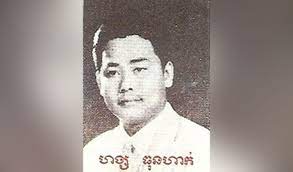
Hem Chieu: Born around 1908, Hem Chieu was a monk associated with Son Ngoc Thanh and Pach Choeun. On July 18, 1942, the French authorities arrested Chieu and his associate, Nuon Dong after he was alleged to have preached anti-French sermons to Khmer troops. This arrest sparked the ‘Umbrella War’.
He was sentenced to death by a military tribunal, later commuted to life imprisonment with hard labour. He died in the notorious Côn Sơn Island prison in October 1943.
Chieu became regarded as a martyr by the leftist United Issarak Front. In 1950, a political school named after Hem Chieu was established in the southwest of the county and an armed Issarak unit was named itself after him. He was also seen as a national hero by the 1970-75 right-wing Khmer Republic regime.
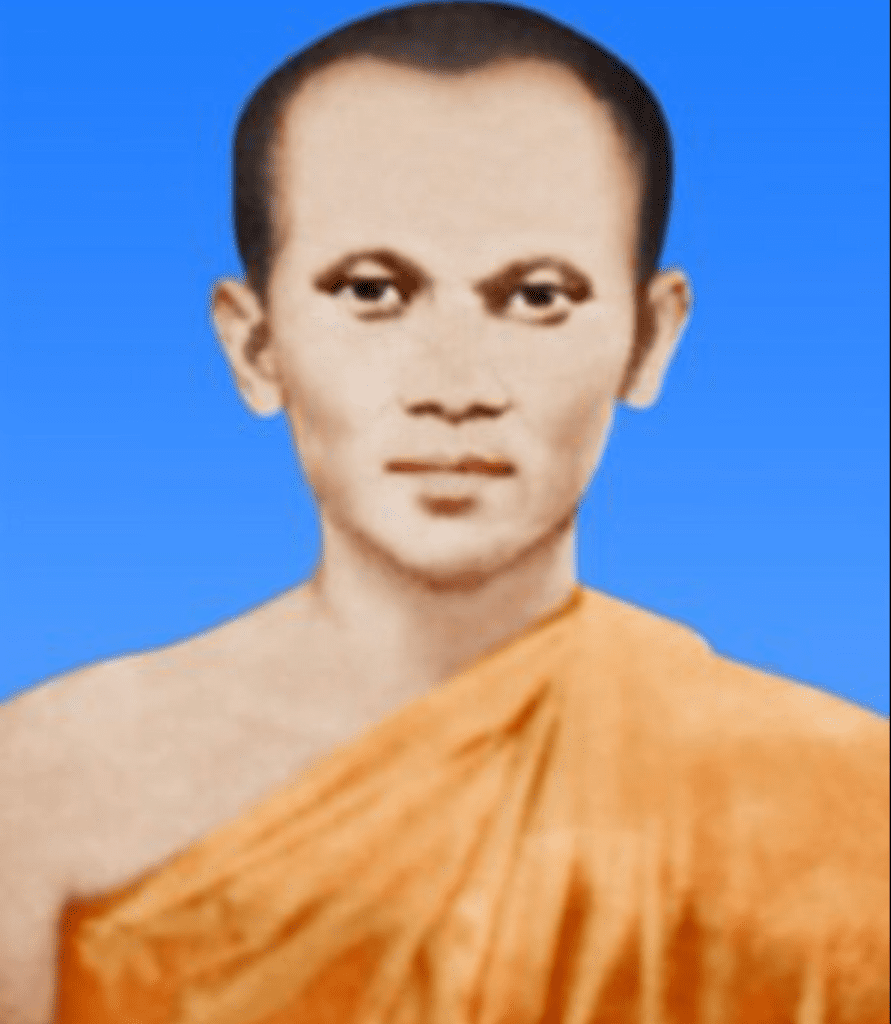
Iv Yang: Provided Son Ngoc Thanh with radio equipment in 1952 and was responsible for general security and military commander in the West region and Battambang and Pursat provinces in the right-wing FUI.
Kao Tak: One of the original leaders of the Issaraks and lieutenant of Son Ngoc Thanh. A merchant from Siem Reap, he was a rival of the leftist Leav Keo Moni. He left the main Issarak group in April 1949 with around 400 men, and was sentenced to death by the CNLK after an ambush in Battambang failed to kill Keo Moni in 1951. He later joined up with Sin Ngoc Tanh, and was killed by state security services in 1955 during a crackdown on former rebels.

Ke Pauk/ Kae Pok : Born Ke Vin in 1934, he was around 15 years old when he joined the Issaraks in 1949, following a raid on his Kampong Thom village by French forces. He was active with the communist faction.
After independence, Pauk was arrested and sentenced to six years in prison he served time in prisons in Phnom Penh and Kampong Thom, but was released three years later.
After his release in 1957, Pauk returned to Chhouk Ksach in Kampong Thom, and was contacted at this time by Party Secretary Siv Heng and asked to rejoin the movement. Pauk joined the Cambodian Communist movement in Svay Teab, Chamkar Leu District, Kampong Cham.
He would rise to a prominent position in the Khmer Rouge- in charge of the North Zone- and died of natural cause on February 15, 2002 in Anlong Veng, after surrendering to the government in the 1990’s.
Khieu Chum: Born in 1907 in S’ang, Kandal, Chum was a prominent Cambodian Buddhist monk and activist who fled to Thailand after the arrest of Song Ngoc Thanh in 1945. Secretary General for Thanh’s FUI.
After independence in 1953, Chum became an active political figure. He was later involved in the planning the Cambodian coup of 1970 which ousted Sihanouk in favor of Lon Nol’s Khmer Republic. Chum was a student of Hem Chieu, a leading figure in the early period of modern Khmer nationalism. He is also credited with writing the March of the Khmer Republic.
When the Khmer Rouge took Phnom Penh in April 1975, Khieu Chum was regarded as a leading figure in the hated Republican
regime. As such, he was an important target and a few days later the Khmer Rouge opened fire on Wat Langka but only damaged one building, Khieu Chum’s kot 33. He was not inside and it seems likely that he was arrested at Calmette Hospital where he was being treated for high blood pressure. His fate is unknown.
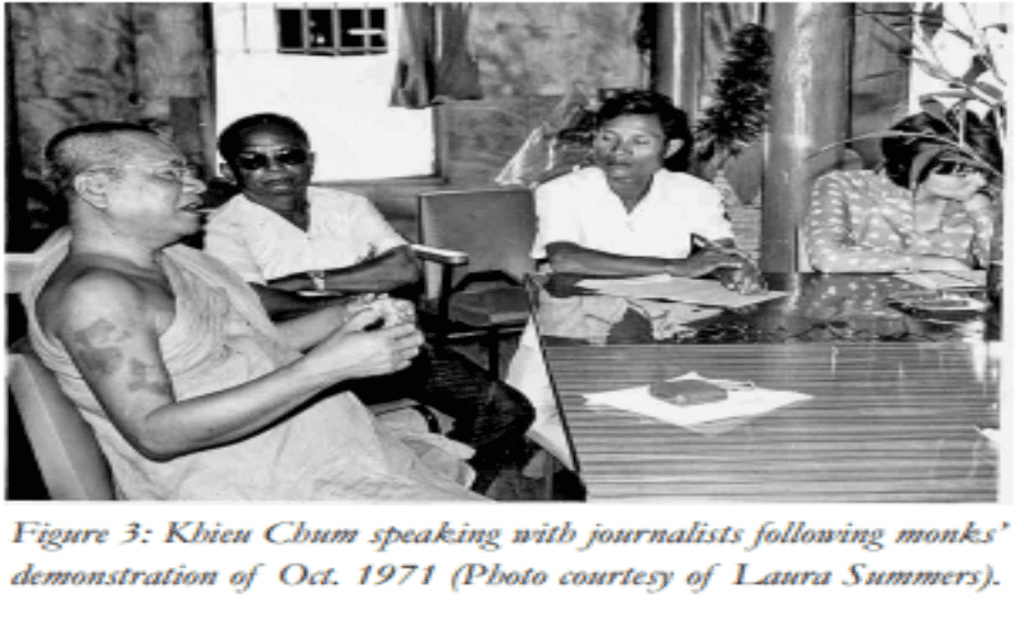
Koam Reth: Thanhist commander of Kampong Thom, Kampong Chhang and Kampong Cham in 1952.
Leav Keo Moni: A name that regularly comes up in documents, but with very little background information. Probably a former bamboo merchant from the Battambang area, Leav Keo Moni was head of the FUI Economy Branch in 1949. It is known that he soon split from the group but became President of the CNLK. He had a long-standing rivalry with Kao Tak- who opposed links with the Viet Minh. Tak failed to assassinate Keo Moni in Battambang in 1951.
Leav Keo Moni was allied with Son Ngoc Minh, working with the Viet Minh. Although the CNLK were unable to formally make an alliance with Son Ngoc Thanh, the groups remained at peace until 1954, despite some minor squabbles.
‘Keo Mony’ was named as a member of Son Ngoc Minh’s delegation which attempted to join the talks in Geneva.
Nguon Hong: An Issarak commander who led a small group in Kompong Chhnang under Savang Vong’s command. Around 1952, Nguon Hong and his group defected from Savang Vong, and joined Son Ngoc Thanh’s forces. However, Nguon Hong also aligned with the communist faction chief in the area, Meas Vong, showing some form of unity between nationalist Thanh faction and communist/Viet Minh forces in the conflict.
Later, Kao Tak allocated 50 soldiers and 30 rifles to Nguon Hong. At the same time, a group who had defected from the non-communist Issarak band of Puth Chhay joined him. Subsequently, Nguon Hong could count of a force of 120 guerrillas.
Prince Norodom Chantaraingsey: A grandson of Norodom of Cambodia and cousin of King Norodom Suramarit, he was born in 1926 in Phnom Penh, Chantaraingsey was arguably one of the greatest military commanders of the period. He began his military career during World War II and the Japanese occupation of Cambodia, serving in the anti-French forces under Son Ngoc Thanh. After the war’s end and the resumption of colonial rule, Chantaraingsey escaped to Thailand and became one of the most prominent non-communist leaders of the Khmer Issarak, leading armed resistance in the provinces of Kampong Speu and Kampong Thom at the head of a large private militia.
In 1949 he joined the CNLK becoming its Supreme Army Chief, then later associated the forces of Son Ngoc Thanh in Siem Reap, though he continued to operate as a semi-autonomous commander maintaining his own troops.
Pol Pot described Chantaraingsey, who at various times fought against the French, the Viet Minh, and Khmer forces aligned with them, as essentially “feudal” in outlook and his men as little more than bandits. The communists had at one point considered making Chantaraingsey their preferred candidate as king instead of Sihanouk, but he proved too wary of the Vietnamese influence on the communist cadres.
Despite his personal rivalry with Sihanouk and his nominally republican stance, Chantaraingsey aligned with the government after Cambodia achieved independence under Sihanouk’s regime and was integrated with part of his forces into the Cambodian army.
He was later found to be plotting a coup, along with other former members of the Issarak, to stage a coup against Sihanouk, Chantaraingsey was stripped of his military rank and royal title.
After three years’ imprisonment, during which he occupied himself by writing a number of well-received romantic novels, Chantaraingsey was released and went on to accrue a large personal fortune through a variety of business ventures, notably after Sihanouk appointed him director of the state-run casino in the capital.
After the 1970 ousting of Sihanouk, Lon Nol appointed Chantaraingsey commander of FANK’s 13th Brigade (known as the “Tiger Brigade”, Chantaraingesey having been born in the Year of the Tiger) with the rank of Brigadier-General. He became military governor of the Kampong Speu province, and perhaps FANK’s most effective commander during the subsequent civil war. As in his Issarak years, Chantaraingsey ran the province as essentially a personal fiefdom; apart from running a successful pacification program, his purchases of American arms from neighbouring generals made his forces ultimately too powerful for Lon Nol to directly challenge.
Unlike many FANK commanders, he ensured his men were well-treated and fed and regularly paid, and was popular as a result. Later in 1973, Der Spiegel was to report that Chantaraingsey, using pseudo-Maoist slogans, was employing his soldiers to build roads and irrigation canals for local farmers, and in return received a proportion of their produce.
He died in unknown circumstances and was thought to have continued fighting the Khmer Rouge after the fall of Phnom Penh.

Moul Sambath aka Nhim Ruos aka Ruoh Nhem aka Muol Un: One of the early Issarak commanders, he joined the underground communist movement following independence and a member of the Central Committee of the CPK in 1963. Known as a moderate within the Khmer Rouge, he was Party Secretary in the Northwest, before being arrested on June 11, 1978 during a Khmer Rouge internal purge. He was executed at S-21.
Some sources claim that ‘Ruos Nhim’ took forces and broke away from the Khmer Rouge in 1977, and clashes between the groups were reported around the Tonle Sap.
He was also related to Sao Phim by marriage, as one of his sons had been engaged to Phim’s only daughter. Both were implicated in a counter-revolution plot which was documented at the ECCC trials, but has also been discredited by other sources.
Non Suon/Norn Suon: A member of the 1950 CCLP, he later turned to politics with the Pracheachun leftist party in the 1955 elections. Although sentenced to death by a military court in 1962, he appears to have escaped punishment and was (or a cadre with the same name) in the Khmer Rouge and reported by some sources as both a rival of Ta Mok, and one of those responsible the forced removal of civilians from Phnom Penh in 1975.
Poc Khun aka Phra Phiset Phanit aka Wibun Pokmontri: A minor member of both the Thai and Cambodian royal family, Phra Phiset Phanit, better known as Poc Khun was the brother-in-law of Thai Prime Minister Khuang Aphaiwong of Thailand. He is widely believed to be the organizer and leader of the first Khmer Issarak movement founded in 1940 to resist French colonial power in Cambodia.
A French report from the time stated that the “Khmer Issarak movement is both a political and commercial affair of the Aphaiwong family”
Khun (as Phiset) was elected to represent Battambang (Phra Tabong) in the Thai parliament during the administration of his brother-in-law following the Franco-Siamese war. After Khuang resigned as Prime Minister and Thailand returned the western Cambodian provinces back to French Indochina, Phiset and other Khmer Issarak members formed the Khmer National Liberation Committee (CNLK) in 1948 to further armed resistance against French rule of Cambodia. The CNLK attempted to distance itself from the Indochinese Communist Party and purge other leftists from within its own ranks paving the way for Poc Khun to become Chairman in 1949. However, he was removed from that position less than a year later after being accused of misappropriating money designating for purchasing weapons.
Puth Chhay/Chay: A near-illiterate peasant turned warlord who joined the Issaraks after serving time in a French prison for robbery and assault. He was little more than a bandit operating out of S’aang and commanded around a thousand men. He hated the French, drank heavily, was a womanizer, relied heavily on magic, and was known for cruelty towards his prisoners.
He was also a ring-leader of ethnic violence towards Vietnamese civilians in the area south of Phnom Penh in the late 1940’s-early 50’s.
After he defected to the government in 1953, Chay was assigned a role in the ‘defense of Phnom Penh’. He and his men were responsible for attacks on rivals and even involved with terrorist acts against the French they were supposedly allied with.
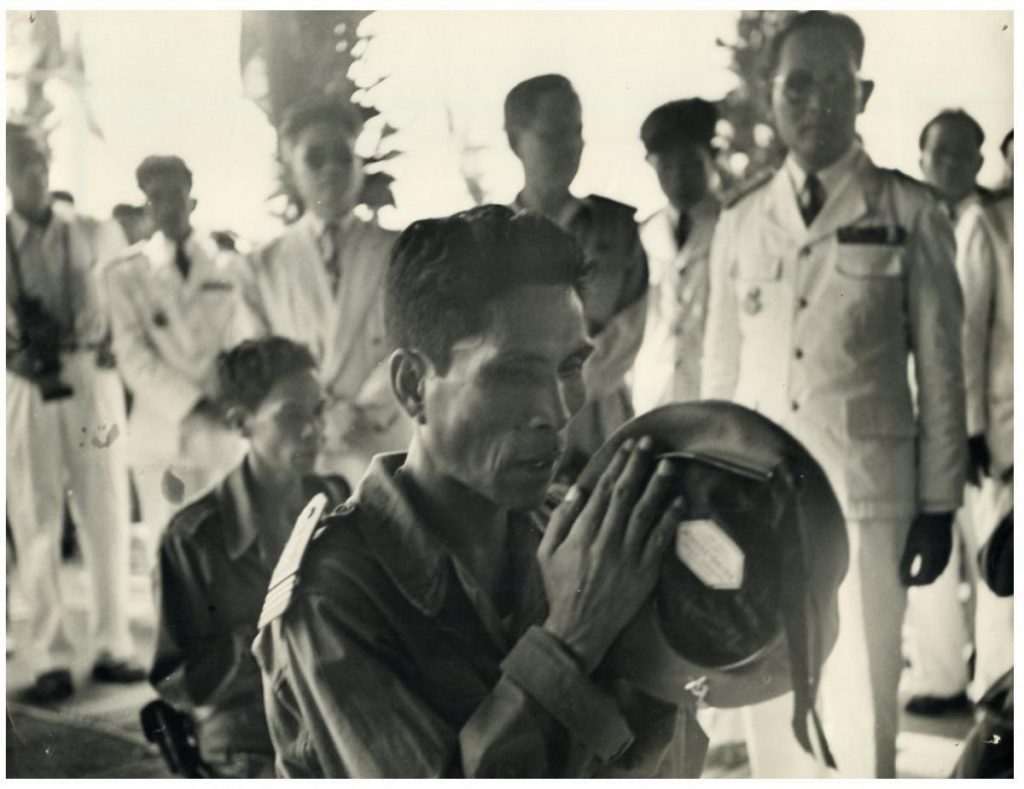
Ros Yeun: A former teacher who founded one of the original Issarak groups in Battambang town, which was still under Thai occupation. They headquartered in a house belonging to a Mrs. Lameay- a relative of the Aphaiwong family.
The numbers increased in 1945, after Son Ngoc Thanh’s arrest forced many of his supporters to flee to Battambang- off limits to the French authorities.
They were financed by the funds from the “Salvation Association” based at Wat Sangker Temple, who donated proceeds from various shows and public performances, which were used to buy weapons and supplies directly from Thailand.
Saloth Chhay: A left-wing journalist and political activist, who was prominent in the country’s politics during the 1950s, 1960s and 1970s. He is best known for being the older brother of Pol Pot (Saloth Sar).
Chhay was born into a middle-peasant family in Prek Sbauv, Kampong Thom province. In the mid-1930s he went to live in Phnom Penh, staying with relatives who had connections at the court of Cambodia’s king, Sisowath Monivong.
Chhay’s interest in Cambodian independence, and leftist political convictions, led to him joining the nationalist guerrilla group led by Son Ngoc Thanh for a brief period in the early 1950s, and he also had contact with another prominent Issarak leader, Prince Norodom Chantaraingsey, with whom he had shared contacts through the court- with some reports saying that he was the Prince’s aide in the 1970’s.
Chhay initially encouraged his younger brother Saloth Sar, who had returned from Paris in 1953, to work with Chantaraingsey, but Sar rejected the prince as “feudal”.Saloth Sar was, however, able to use Chhay’s connections within the communist anti-colonial movement in order to gain contacts; Chhay spent time with the Viet Minh, who had a presence in the Cambodian border areas, taking his brother with him. His visit to the eastern headquarters of the United Issarak Front, the Cambodian communist resistance, paved the way for his brother’s visit there in 1953.
He died in unknown circumstances shortly after the Khmer Rouge came to power in 1975.
So Phim/Ta Phim/ Sao Phim/ So Vanna: Born around 1925 in eastern Cambodia . He began his military career in the French army before becoming one of the leaders of the Issaraks at the end of the 1940s 1 .
In August 1951 , he was one of the five founding members of the PRPK – Revolutionary People’s Party of Kampuchea.
After the Geneva Accords he spent a brief stint in Hanoi, and returned to Cambodia to become one of the four members of the provisional committee. As KPRP was threatened by the police Norodom Sihanouk and betrayal of its own leaders, Phim went underground and worked as a carpenter.
In 1960 , Phim was elected alternate member of the central committee of the newly created Kampuchea Workers’ Party, before becoming, three years later, a permanent member, occupying the fourth or fifth place in the party hierarchy. This committee, composed of five members, was dominated by the anti-Vietnamese intellectuals of Pol Pot . He alone was of peasant origin.
From 1960 until his death in 1978 , he headed the East Zone Committee.
Described as “a stocky man of about 1.80 m, round face with dark skin and straight black hair…. considered rude and could, in a huff, threatening his colleagues with his pistol.” He seemed, nevertheless, loved by his men and had a reputation, perhaps undeservedly as a moderate. He was involved with repression against the Cham Muslim population in his area, especially in the province of Kampong Cham , when the population refused to follow the rules set by the Khmer Rouge.
In 1978 , after an incursion by the Vietnamese army led by General Võ Nguyên Giáp in retaliation for the raids and atrocities perpetrated across the border by the armies of Pol Pot , and to which the troops from the East Zone did not had not been able to resist a massive purge led by Ke Pauk was ordered.
In order to escape the massacres, many cadres, the best known of which was Heng Samrin, chose to cross the Vietnamese border . So Phim, who had never hidden that he preferred dialogue with the powerful neighbor to violence was suspected of trying to do the same . Surrounded by Pol Pot’s forces on June 3 , 1978 , he committed suicide. His wife and children were captured and massacred as they prepared his body for a Buddhist burial ritual. He was replaced at the head of the eastern zone by Nuon Chea.

Seap aka Captain Seap: A rightwing commander linked with Puth Chhay and Chantaraingsey. After Seap’s plot to kill Chantaraingsey was uncovered by the prince, a firefight broke out between men from both sides at Chantaraingsey’s HQ. Seap managed to escape alive, although his wife and many men were captured.
Surrendered after independence and was commissioned into the FARK.
Sieu Heng / Siv Heng: Became a communist in 1945 and was commander of communist Khmer Issaraks in the 1950’s. After Son Ngoc Minh left for Hanoi following the Geneva Accords, Heng was in charge of communist movements inside Cambodia. By the time of the 1955 election, Heng had turned into a double agent, working secretly for Sihanouk and later openly defected to the government- informing on his former comrades. At the same time, he claimed that “making revolution was impossible”. In 1975, Heng was killed by his wife’s nephew Long Bunruot aka Nuon Chea.

Son Ngoc Minh aka Achar Mean : Probably born in 1920 in Trà Vinh Province (present-day Vietnam) to an ethnic Khmer father and a Vietnamese mother. Other sources say he was the son of a Vietnamese laborer born in Kampot. He earlier went under the name of Thach Choeun, but it is unclear whether this was his birthname or an alias.
He became a Buddhist lay preacher (Achar) and was involved with the anti-French protests planned at the Buddhist Institute alongside Son Ngoc Thanh. After the ‘Umbrella War’ protest of 1942, he fled to Yeay Tep Monastery in Kampong Chhnang. From there he established an underground network linked to the PCI. He took the name of Son Ngoc Minh- capitalizing on the popularity the banished Son Ngoc Thanh, despite the latter ordering his arrest for breaking into the palace to stage a coup in 1945.
Son Ngoc Minh: Leader of the first nationwide congress of the leftist Khmer Issarak groups, which founded the United Issarak Front. In 1950, he formally declared Cambodia’s independence after claiming that the UIF controlled one third of the country. Along with Tou Samouth, Minh founded the Khmer People’s Revolutionary Party (KPRP) in August 1951. After the Geneva Agreements and the end of the First Indochina war, Son Ngoc Minh and many Khmer Issarak officials left Cambodia for North Vietnam.
Minh remained a senior figure in the Party, albeit largely operating from Hanoi in North Vietnam, until 1972, when at the request of Ieng Sary he was sent to hospital in Beijing to be treated for high blood pressure. Minh died in Beijing on December 22. His death further lessened the influence of the Hanoi-trained communists on the Khmer Rouge, correspondingly increasing the power of the hardline Party ‘Centre’ led by Pol Pot.
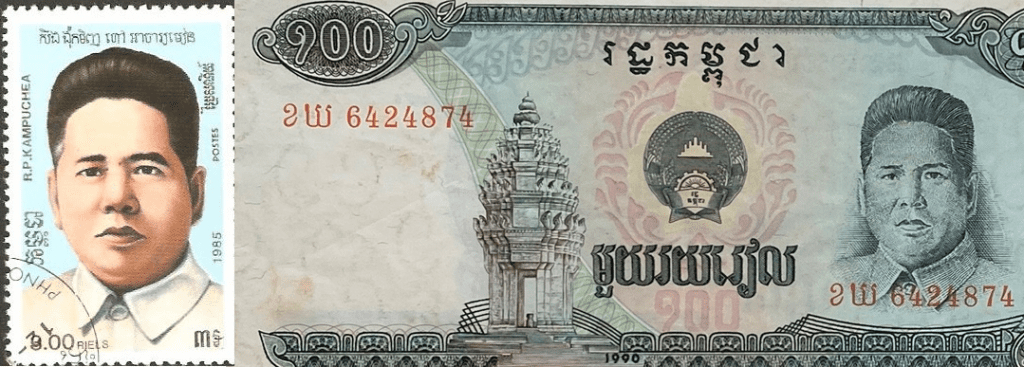
Son Ngoc Thanh: A political chameleon who first rose to notice as editor of the Nagravatta newspaper. After the ‘Umbrella’ demonstrations against the French in July 1942, Thanh fled to Japan, returning when Sihanouk declared Cambodia’s independence on March 12, 1945, during the Japanese occupation.
He was made Foreign Minister, and in August, with the surrender of Japan, Thanh made himself Prime Minister. With the restoration of French control in October, he was arrested, and sent into exile first in Saigon and then in France. Many of his supporters joined the Khmer Issarak resistance to fight the colonial power.
In 1951, the authorities brought Thanh back, to considerable popular acclaim. After refusing a government position, he made alliances with various leaders of the Khmer Issarak rebels, and established another newspaper (Khmer Kraok) which advocated revolt against the French administration and was quickly banned. In 1952, accompanied by his lieutenant Ea Sichau and a number of supporters, Thanh disappeared into the forests in the area of Siem Reap, and began to organise resistance.
After independence, he remained a thorn in Sihanouk’s side, and founded the right-wing, CIA supported Khmer Serei militia to fight against the Vietnamese communists.

Thim Tralay: A CNLK commander who operated south of Battambang. Tralay’s band was in charge of relations with Viet Minh, and operated jointly with Viet Minh forces in the area.
Tou Samouth aka Achar Sok: Samouth was a Khmer Krom who was born and raised in Cochinchina. Trained as a Buddhist monk in his youth, and by World War II, he was professor of Pali at Unnalom Monastery in Phnom Penh. In 1945, an American air raid directed against Japanese military targets struck the Monastery, causing several deaths. Samouth was so frightened by this event that he fled to the countryside, eventually making his way to Vietnam, where he joined the Viet Minh. In the late 1940s, Samouth lectured groups of Khmer recruits on political awareness and economics.
Samouth went on to be a founder member of the Khmer People’s Revolutionary Party, the precursor to the Communist Party of Kampuchea, along with Son Ngoc Minh. He was also one of the leaders of the UFI and became the Interior Minister of the self-proclaimed government of Son Ngoc Minh.
As a more moderate voice, he headed the ‘rural’ cadres of the Khmer Communists after Geneva, advocating Buddhism and the role of Sihanouk as head of state, and is remembered for mentoring Saloth Sar/Pol Pot.
After a secret meeting in 1960 in Phnom Penh railway station. Samouth, who still advocated cooperation with Sihanouk, was elected General Secretary of the underground communist movement. Pol Pot was named as third in the Party’s hierarchy behind Samouth and Nuon Chea.
He disappeared in 1962- with some blaming Sihanouk’s secret police, and others Pol Pot.
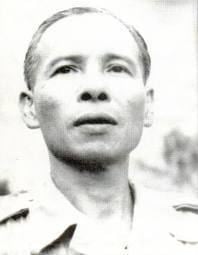
By Steve

Thanks for your very detailed research and effort. I wait more work about Cambodian untold history.